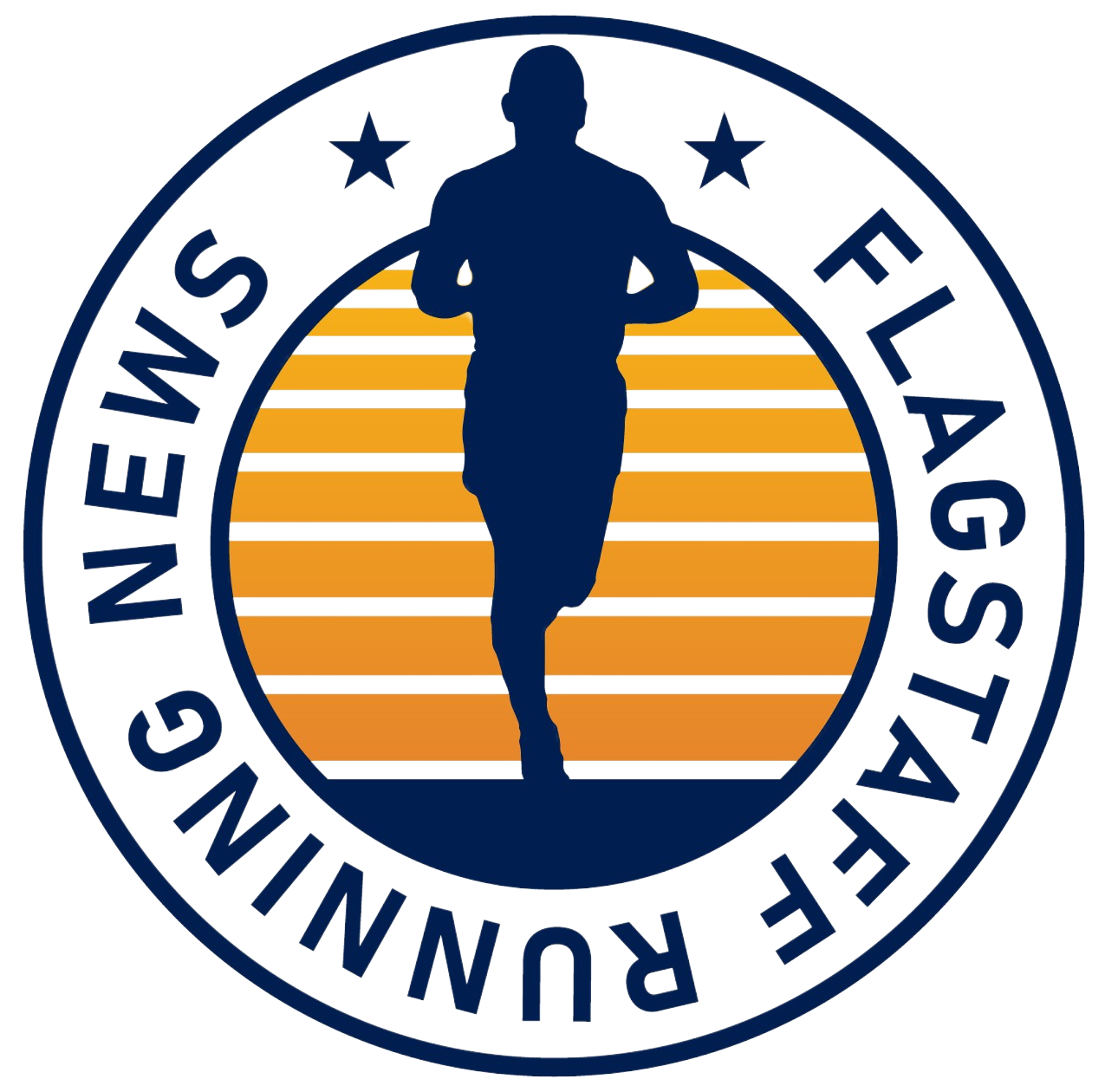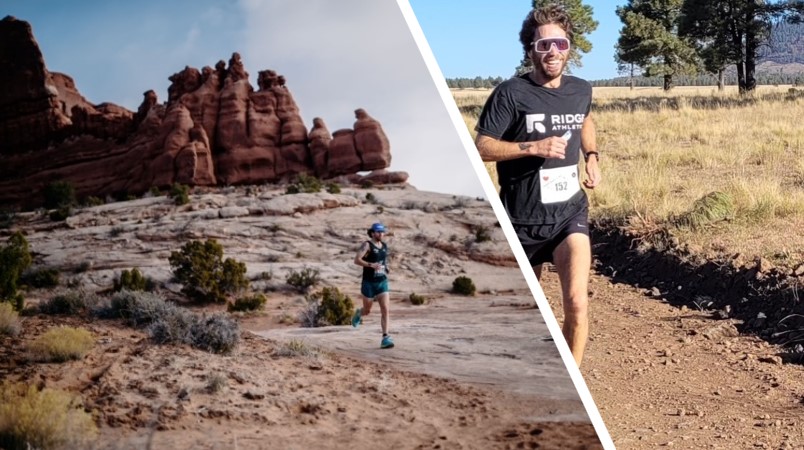Editor’s Note: This is the fifth, and final, profile in a series highlighting Flagstaff runners who will compete in May 6’s Cocodona 250, which runs from Black Canyon to Flagstaff.
Being a Flagstaff physical therapist whose clientele includes a passel of elite distance runners, Kam Harder certainly knows what kind of stresses a body can, and cannot, absorb in endurance events, how to train to mitigate the carnage wrought over, say, 250 miles of desert and mountain terrain with 39,000 feet of elevation gain and sometimes wild temperature swings.
Good thing, too, because Harder himself will be taking on the Cocodona 250, something of a terra incognita proposition for the 31-year-old whose longest previous race was the Javelina 100 in Phoenix two years ago.
But, given his profession – he has a doctorate in physical therapy from NAU and owns Ridge Athletics in town – you can rest assured Harder knows what he’s getting into and how to prepare for the stress of four-plus days and nights in the wild places.
It boils down, he said, to two training modalities he’s imparted to distance running clients and employed himself in the Cocodona build up: strength and volume.
There’s a third prong, too: mental preparedness. But when it comes to preparing the body itself for the rigors, the first two are vital. And it turns out that – brace yourself, runners – he believes strength training may be the most important for success, not just at Cocodona but any ultra or marathon race.
Nursing a coffee recently at White Dove recently, Harder smirked when it was suggested that his job in PT might give him some type of advantage over 250 miles.
“Noooo,” he said. “I definitely don’t think I have an advantage. If anything, I just know what makes me feel the best. What makes me feel the best – and this isn’t necessarily because of background in PT, it’s just experimenting different things in my body – is a higher volume of strength training and a lower volume of running.
“When I start running high volume for a long time, my body just doesn’t feel good. I feel unhealthy. I feel I’m deteriorating. I try to supplement that with other things. That means cross training like biking and backcountry skiing. And strength training.”
First, volume. When Harder talks about volume of training, he does not necessarily mean mileage.
Sure, he runs a lot, with long efforts (example: last week, he ran the circumference of the Flagstaff Loop, 47 miles), but it’s not big mileage. No routine 100-mile weeks for him. It’s more about overall aerobic volume and what ultra folks call time-on-the-feet. In other words, spending hours and hours on trails or on mountains moving in some form.
He calls his Cocodona training “all over the place, with some big days back-to-back,” but really there’s a specific plan, heavy of versatility.
“I think Cocodona is truly about just being able to be out in the elements for a long period of time and being able to take care of yourself,” he said. “Back when I was training for Javelina, that was a lot of running. Javelina, you can run the entire thing. Cocodona, you can’t. You have X-amount of vert in that first 50K of the course, which is an insane amount.
“I’ve also strung along some big backcountry ski days around the (San Francisco) Peaks and in Colorado. Multiple six-hour days, back to back. Being out in the elements for a long period of time is great for me mentally and great for my body. What I did was string together big efforts and try to stay healthy. I’d try to stay cardiovascularly fit, whether that was skiing, running or biking.”

“When you’re running, you can have five times your body weight load going up your body with every step you take. If you weigh 150 pounds, you could have 750 pounds of force going up your legs with every step. Which means we can’t train that by just doing body weight (exercises). We have to add weight in order to adapt our bodies to the forces of running.”
Kam Harder
Which brings the subject to the second modality: strength training.
When he signed up for Cocodona after mulling entering the race for two years, Harder knew he’d have to up his game on the strength training. After all, it’s what he preaches to his running clients.
“Most runners do strength training, but they don’t do it in the way they should,” he said. “It’s more having to convince runners to do strength training with weight, rather than body weight. Instead of body weight squats, clam shells and calf raises, you should be adding a decent amount of load onto that.
“When you’re running, you can have five times your body weight load going up your body with every step you take. If you weigh 150 pounds, you could have 750 pounds of force going up your legs with every step. Which means we can’t train that by just doing body weight (exercises). We have to add weight in order to adapt our bodies to the forces of running. Otherwise, you’ll get injured. I treat everyone from Olympic trials qualifying marathoners to people who’ve done 250-mile races. They all now have drank the juice of strength training.”
Specifically, Harder said he lifts weights, “barbell stuff” such as squats, dead lifts and lunges, six to eight repetitions to failure. He said he does two, sometimes three, days of strength training a week.
“I’ve felt the difference, too, in my running,” he said. “This is the most I’ve strength trained my entire life for the last six months to a year, and it’s interesting. Before I’d go on a long run after not doing something like that for a long time, and I’d get that crampy sensation. But with the strength training, I get none of that. I finished that 47-mile run last week and my muscles felt totally fine.”
Harder is not an elite ultra runner, though he’s posted some impressive results. He won the 12-hour Across the Years Race in 2022 (72.2 miles) and has reached the podium in several Aravaipa Run-sponsored races, including placing third in the 2022 Flagstaff Extreme Big Pine 53K.
The Cocodona 250 is a whole other thing, though. But Harder is well aware. He’s paced runners in previous years, but that’s not the same as going all-in.
That’s where mental toughness comes in. Harder said that he’s experienced a lot of highs and lows in other ultras he’s run and has taught himself to push through and transcend the discomfort.
In training, those long days with time-on-the-feet has been a mental lift, too.
“I’ve re-created those occurrences — feeling really good and then feeling really bad – and that helps expose yourself to that feeling desensitize yourself to the lows,” Harder said. “I’ve never had a time when the lows stick around. You always come out of it. When you’re in the midst of it, just remember that it’s going to be over.”
He has talked with Cocodona veterans Sarah Ostaszewski and Christopher St. Jean, both top 10 finishers last year, and Alex Lamb, whom Harder paced. He’s gotten good advice. The main thing is to keep perspective, especially since he won’t be contending for the victory with the likes of Michael McKnight and Jeff Browning.
“You’re just trying to get through the day as healthy as you can,” he said.
Harder has a busy PT practice, and free time is hard to come by, but Cocodona has been on his radar for several years. He lives about a mile away from the start of Cocodona’s final climb on Elden Lookout Trail. He said he’d run out to the trail and cheer on the weary runners.
“I got super inspired just watching that,” he said.
There’s another plus to doing Cocodona, he said. It’s sort of a way to drop out of society for a week.
“It just seems like a great experience: to have one goal to focus on for four-plus days,” he said. “Like, you wake up, you run. You go to bed. You run. You do that for the entire thing. It’s like it’s your job, your goal. It’s a lot of really intentional focus, and I was drawn to that. Day to day life, you’re just all over the place. It sounded great to home in on a present moment and just focus on one thing for a long time.”
Harder doubts that Cocodona will become an annual migration in his life, saying he’ll likely be “one and done.”
What’s next on his racing calendar?
“The Downtown Mile,” he said, smiling. “I love that race.”


Leave a Reply